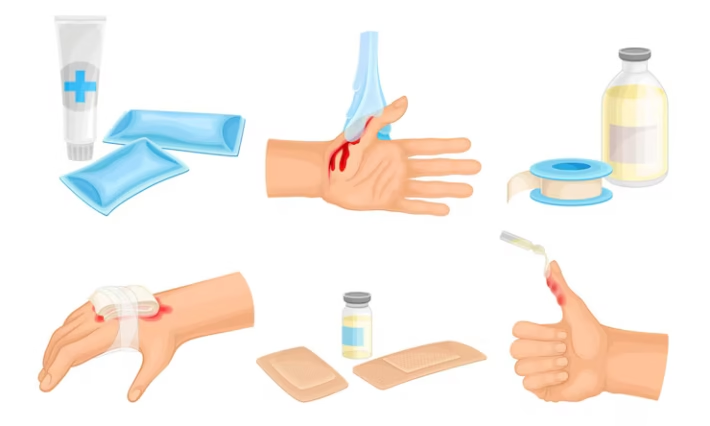Common mistakes to avoid

🚫 Common Mistakes to Avoid When Cleaning Wounds
Cleaning wounds properly is crucial for preventing infection and promoting healing. However, many people unknowingly make mistakes that can delay recovery or even cause complications. Knowing what NOT to do can help you take better care of wounds at home.
Here are some common mistakes to avoid when cleaning wounds:
1. Using Harsh Chemicals Directly on Wounds
Many people reach for hydrogen peroxide, iodine, or rubbing alcohol thinking they disinfect better. While these can kill germs, they also damage healthy tissue and slow healing.
Better alternative: Use clean running water and mild soap around the wound, and apply gentle antiseptics or antibiotic ointments recommended by healthcare providers.
2. Ignoring Dirt or Debris in the Wound
Leaving dirt, gravel, or other foreign materials inside a wound can lead to serious infections.
Tip: Always inspect the wound carefully. If debris can be safely removed with sterilized tweezers, do so gently. For embedded objects, seek medical help.
3. Not Washing Hands Before Wound Care
Touching a wound with unwashed hands introduces bacteria and increases infection risk.
Always wash your hands thoroughly before and after treating a wound. Using disposable gloves is even better if available.
4. Leaving Wounds Uncovered
Exposing wounds to air isn’t always best. Leaving wounds uncovered can cause them to dry out excessively, crack, and slow healing, or get contaminated.
Use a sterile bandage to protect the wound, especially in dirty environments or when the wound is still fresh.
5. Changing Dressings Too Infrequently or Too Often
Waiting too long to change a dirty or wet dressing can promote bacterial growth. On the other hand, changing dressings too frequently or roughly can irritate the wound and disrupt healing.
Change dressings once daily or sooner if they get wet or dirty, and always handle gently.
6. Picking at Scabs or Healing Tissue
It can be tempting to pick scabs or peel away skin, but doing so reopens the wound and increases infection risk.
Let the wound heal naturally. If scabs become painful or look infected, see a healthcare provider.
7. Not Seeking Medical Help When Needed
Some wounds require professional care, especially if they’re deep, won’t stop bleeding, or show signs of infection.
Don’t delay seeing a doctor if you notice:
- Increased redness, swelling, or pus
- Fever or chills
- Wounds caused by animal bites or rusty objects
- Numbness or loss of function near the wound
Final Advice
Proper wound care is simple but requires attention and patience. Avoiding these common mistakes will help ensure your wounds heal safely and quickly.
If you ever feel unsure about the severity of a wound or the best care, don’t hesitate to consult a healthcare professional.


Aute mi ut suspendisse velit leo, vel risus ac. Amet dui dignissim fermentum malesuada auctor volutpat, vestibulum ipsum nulla.
Sed reprehenderit quam, non felis, erat cum a, gravida lorem a. Ultricies in pellentesque ipsum arcu ipsum ridiculus velit magna, ut a elit est. Ultricies metus arcu sed massa. Massa suspendisse lorem turpis ac.
Massa suspendisse lorem turpis ac. Pellentesque volutpat faucibus pellentesque velit in, leo odio molestie, magnis vitae condimentum.